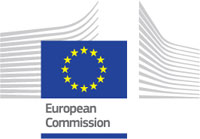SIA
System for vehicle-infrastructure Interaction Assets health status monitoring
Financed by

Número de contrato: H2020-GALILEO-GSA-2017-1
Programa: 776402
Partners
-
Ceit Coordinador
-
UNION INTERNATIONALE DES CHEMINS DE FER (France)
-
DEUTSCHES ZENTRUM FUER LUFT - UND RAUMFAHRT EV (Germany)
-
INGENIERIA Y CONTROL ELECTRONICO SA (Spain)
-
TELEFONOS LINEAS Y CENTRALES SA (Spain)
-
VIAS Y CONSTRUCCIONES SA (Spain)
-
BB-Infrastruktur AG (Austria)
-
Ferrocarrils de la Generalitat de Catalunya (Spain)
-
NOTTINGHAM SCIENTIFIC LTD (United Kingdom)
Summary
SIA (System for vehicle-infrastructure Interaction Assets health status monitoring) has the objective of developing four ready-to-use new services to provide prognostic information about the health status of the railway’s most demanding assets in terms of maintenance costs, at the points of the interaction between the vehicle and the infrastructure (wheelset, pantograph, rail and catenary). More specifically, the common features of the new services (iWheelMon, iPantMon, iRailMon and iCatMon) are detailed below:
-
Plug-in SW based on Web Application to be integrated with already existing maintenance information systems, avoiding the need to replace the entire system.
-
Real time information about assets health status and views of prognostic health status with different time frames to make projections of future scenarios (e.g. future maintenance costs, remaining useful life of the rail and estimated necessary investment).
-
Gateway to maintenance work flow managing software which can trigger maintenance actions and to traffic management information systems to inform about early detected failures in components that can trigger speed restriction or line blocking.
In addition, the specific characteristics of the new four services are highlighted below:
-
iWheelMon, which is intended for TOCs and integrated operators, will provide real time information about wheel status (e.g. presence of wheel flats) and prognostic health status information within a certain time frame such as predicted wear, RCF and poligonization, and maintenance recommendations for meeting ISO 1005-8 and TOC specific requirements.
-
iPantMon, which is intended for TOCs and integrated operators, will provide real time information about the pantograph status (e.g. incorrect vertical damping forces of upper arm) and prognostic health status information in a certain time frame such as wearing of contact stripes, and maintenance recommendations for meeting EN 50405 and TOC specific requirements.
-
iRailMon, which is intended for IMs and maintenance subcontractors, will provide real time information about the rail status (e.g. broken rail) and prognostic health status information in a certain time frame such as squats, corrugation, wear and RCF, and maintenance recommendations according to ISO 5003:2016 and IM specific maintenance requirements.
-
iCatMon which is intended for IMs and maintenance subcontractors, will provide real time information about the catenary status (e.geirr wearing of cable) and prognostic health status information in a certain time frame such as inclination of the mooring balance with respect to the rail, break of the automatic regulation pulley, wear of cables, and maintenance recommendations for meeting EN50119.
These four new services (iWheelMon, iPantMon, iRailMon and iCatMon) will bring:
-
Reduction of 25% in unscheduled maintenance activities and saving of 15% of maintenance costs.
-
Reduction of 10% in service unavailability.
-
Reduction of 15% of derailments associated to wheel to rail interface failures (e.g. broken rails or wheel flats).
Ceit's role in the project
Ceit is the Project coordinator, directly reporting to GSA and EC. Concerning technical activities, Ceit is coordinating the development of iCatMon and iPantMon services, in the design and implementation of sensing nodes, signal processing and feature extraction algorithms, modeling of the pantograph-to-catenary interaction and physical degradation modeling for prognostic functionality. Ceit is also coordinating the integration of the data hub and system’s communications, as well as the data architecture of the back-office applications.